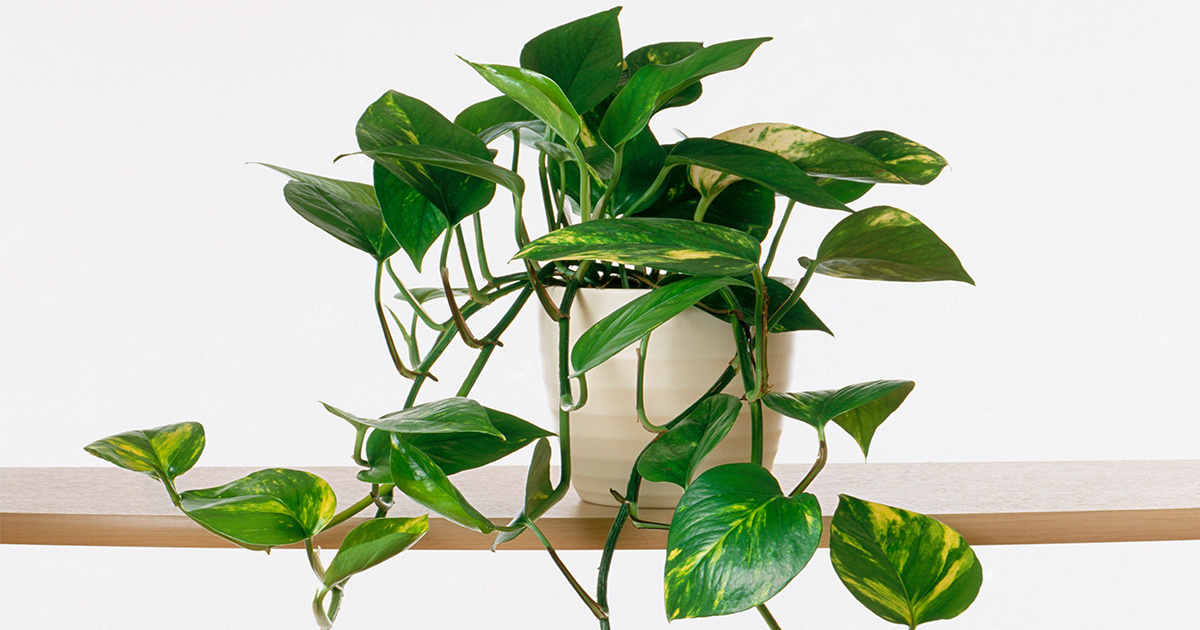
Scientists Combine House Plant With Rabbit Gene to Form ‘Green Liver’ Against Indoor Air Pollution

Scientists at the University of Washington (UW) may have found an unexpected way to tackle persistent indoor air pollution: a common houseplant modified with rabbit DNA.
Researchers wanted to find a way to remove the toxic compounds chloroform and benzene from the home, a UW press release explained. Chloroform enters the air through chlorinated water and benzene comes from gasoline and enters the home through showers, the boiling of hot water and fumes from cars or other vehicles stored in garages attached to the home. Both have been linked to cancer, but not much has been done to try and remove them. Until now.
“People haven’t really been talking about these hazardous organic compounds in homes, and I think that’s because we couldn’t do anything about them,” senior study author and UW civil and environmental engineering department research professor Stuart Strand said in the release. “Now we’ve engineered houseplants to remove these pollutants for us.”
“People haven’t really been talking about these hazardous organic compounds in homes, and I think that’s because we couldn’t do anything about them” @UW civil & environ engineering prof Stuart Strand & team made plants that remove toxins ?#ThisIsUW Story: https://t.co/4QYfdOqVQi pic.twitter.com/rM6Umvhf2i
— UW Engineering (@uwengineering) December 19, 2018
To achieve this, the scientists set out to create something Strand calls a “green liver.” That’s because they used a protein called 2E1 that exists in the human liver to help us process alcohol. It turns benzene into phenol and chloroform into carbon dioxide and chloride ions. This protein is also present in all mammals, including rabbits. Researchers made a synthetic version of the rabbit gene that produces this protein and introduced it to the common houseplant pothos ivy. According to lead author Long Zhang, pothos ivy was chosen because “it’s a robust houseplant that grows well under all sort of conditions.” It is also a tropical plant unlikely to flower in the temperate Pacific Northwest and spread the modified genes via pollination.
The results, published in Environmental Science and Technology Wednesday, showed that the gambit paid off. The researchers put both regular and modified plants in test tubes with the offending gases. The gas levels in the tubes with the unaltered plants didn’t change at all. But the concentration of benzene in the tube with the rabbit-enhanced plant decreased by 75 percent in eight days. Chlorine levels fell even faster: by 82 percent after three days and to almost undetectable levels by day six.
Strand hopes that the plants could be incorporated into a “bio-filter” that would purify air pushed into it by a fan.
“If you just have one of these plants sitting over in the corner, it is not going to have enough contact with the home air to do any good,” Strand told The Guardian.”There aren’t any devices presently on the market for dealing with these [volatile chemicals] so what we are proposing here is a technology that can fill that gap.”
The researchers also want to see if they can use the same concept with other genes and other chemicals, like formaldehyde, which can be released into the home via furniture or cooking.
Center for Ecology and Hydrology professor Lawrence Jones, who was not involved in the research, told The Guardian that the idea would need to be developed further to see if it would actually work outside of the lab and in the home, where there is much more air to clean.
But University of York plant biotechnologist Dr. Liz Rylott, who was also not involved with the project, was more enthusiastic.
“This is a great breakthrough technology—on paper the health benefits are clear … these plants are lowering your exposure to toxins and that can only be a good thing,” she told The Guardian. “It is difficult to say how this will affect your life [on] a long-term basis, but who doesn’t want to lower their exposure to toxins?”
Is @BillGates Right About #GMOs? https://t.co/faiJwOltmA @NonGMOProject @nongmoreport @FoodDemocracy @Food_Tank pic.twitter.com/akLCq1yUGH
— EcoWatch (@EcoWatch) March 23, 2016

 233k
233k  41k
41k  Subscribe
Subscribe 